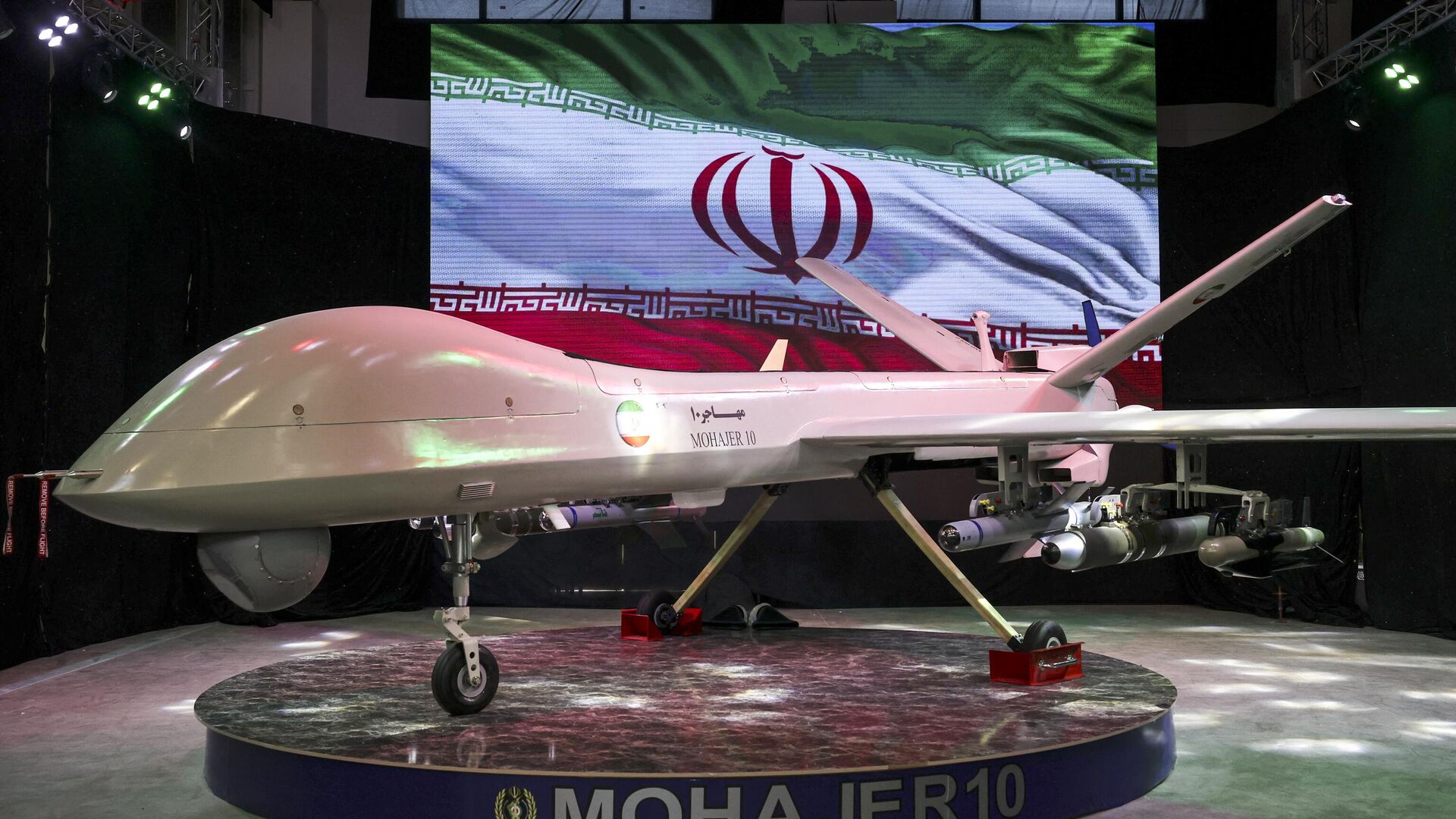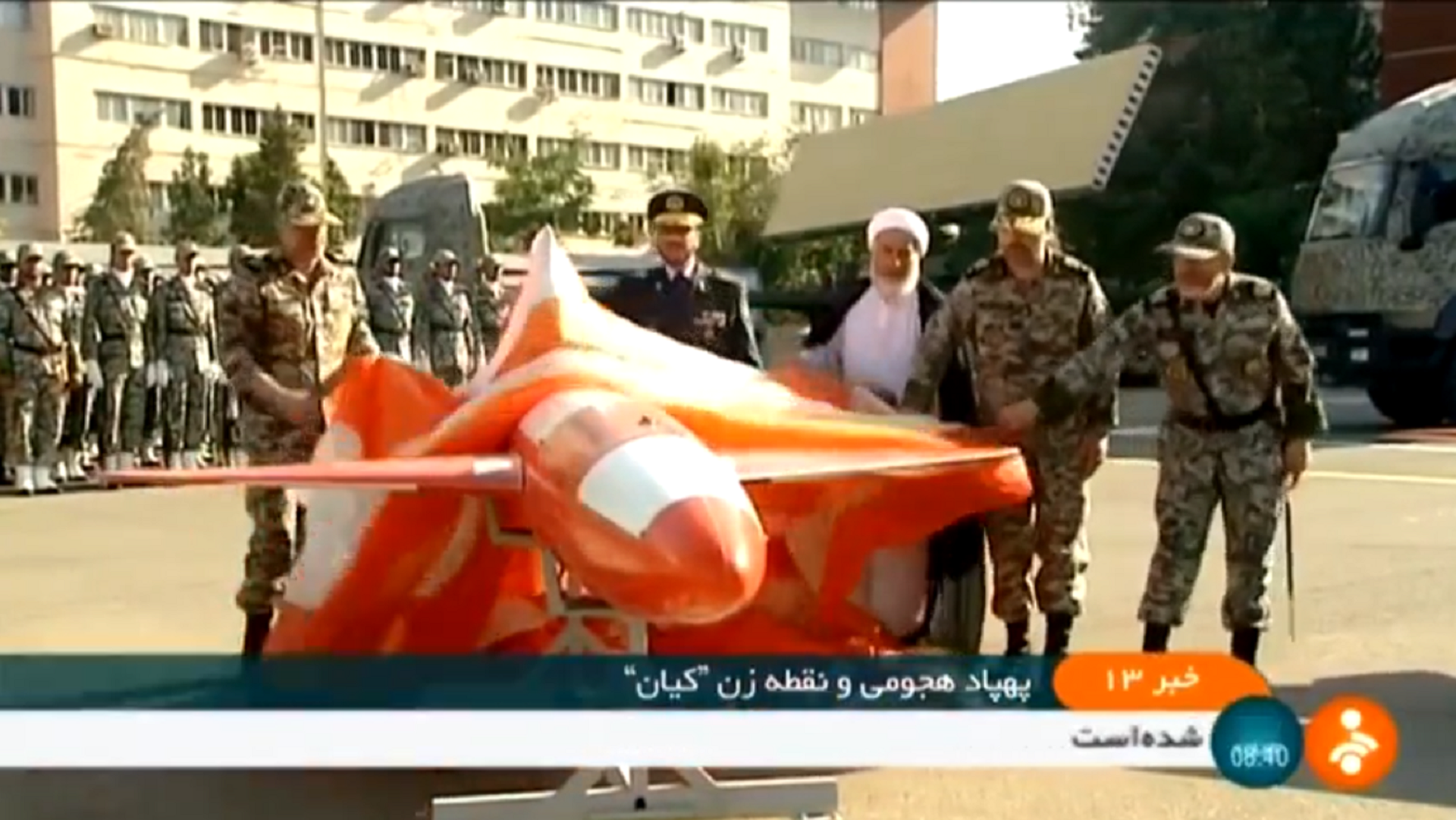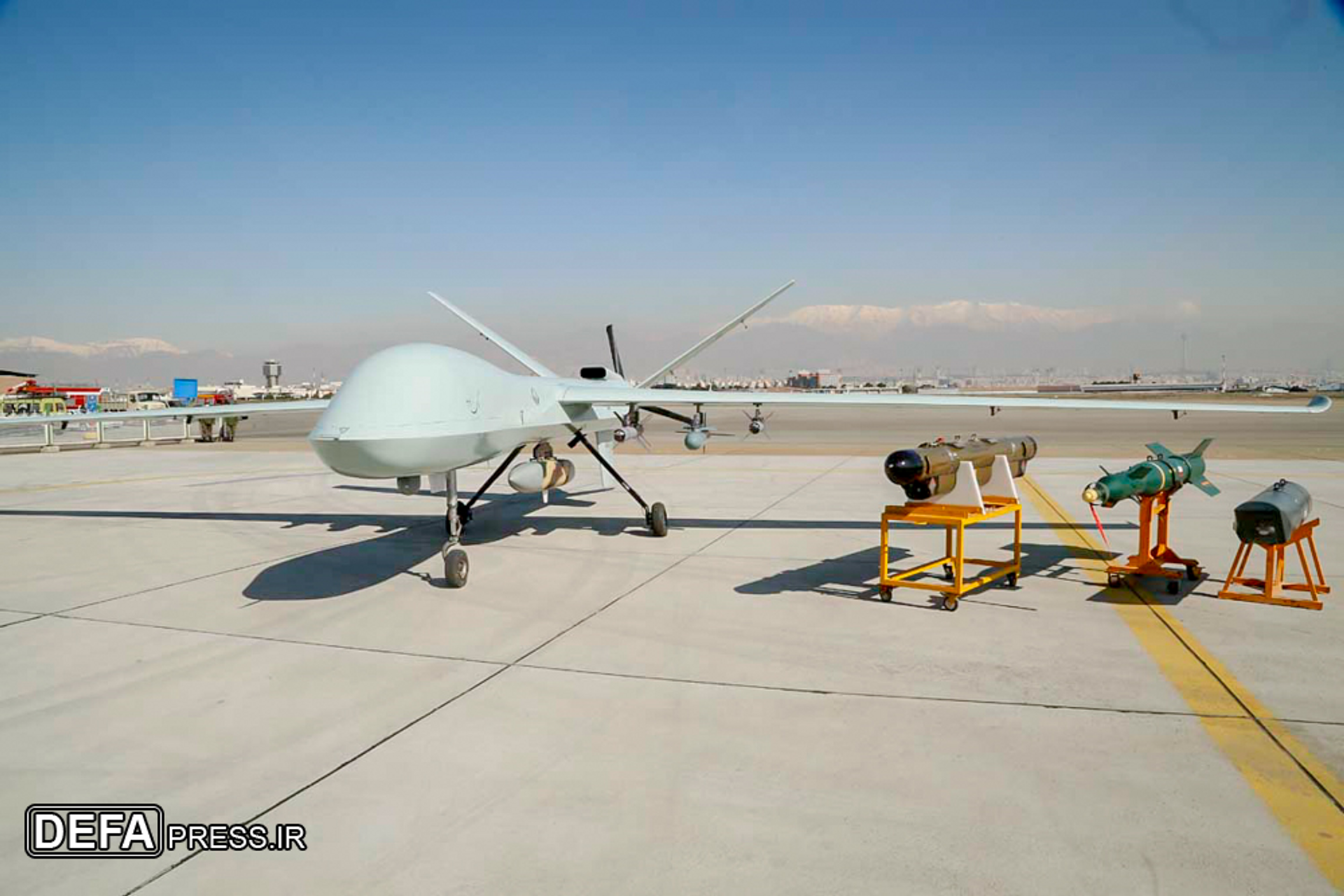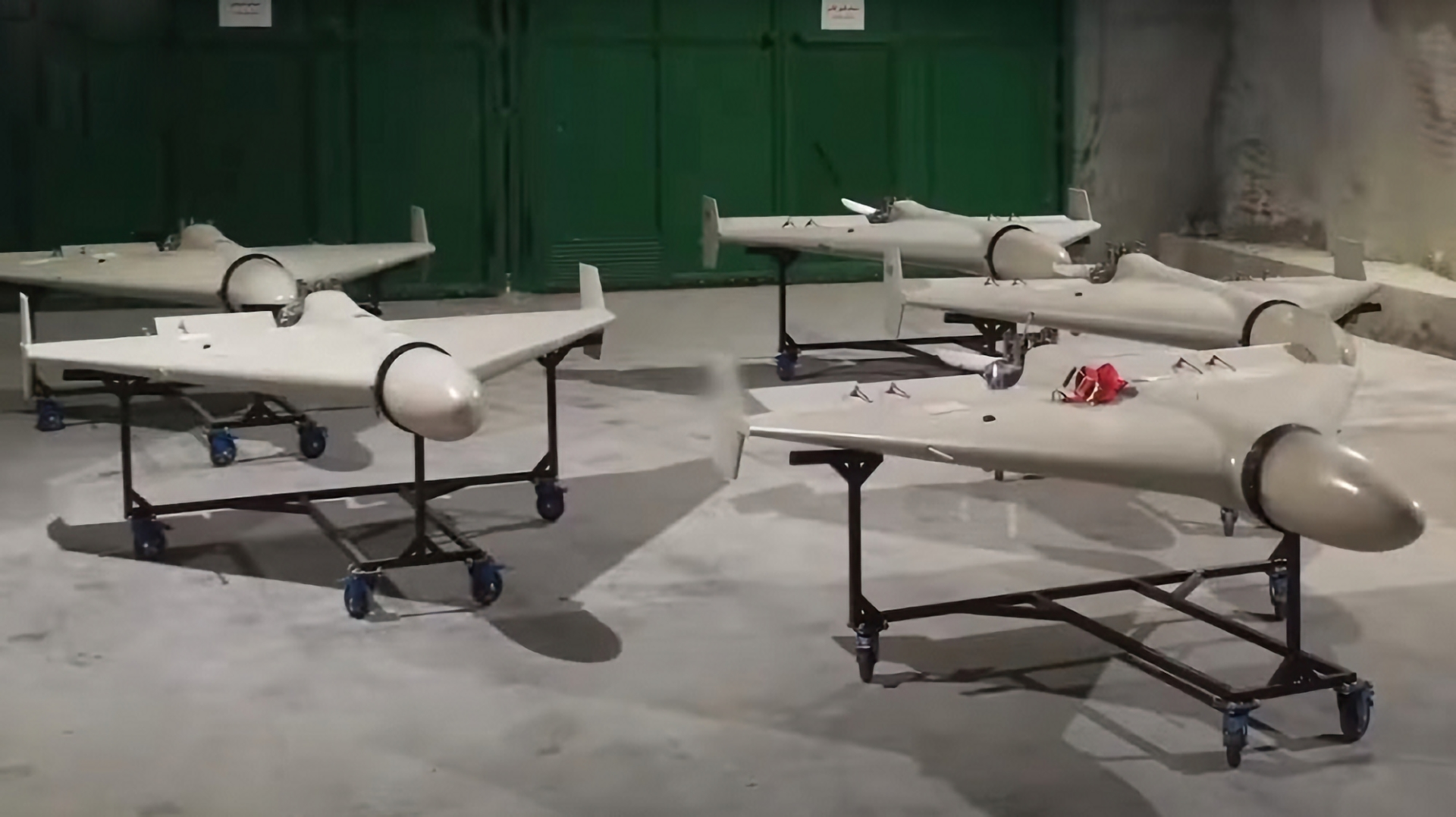https://sputnikglobe.com/20240412/5-fearsome-drones-iran-could-use-to-strike-back-at-israel-1117892043.html
5 Fearsome Drones Iran Could Use to Strike Back at Israel
5 Fearsome Drones Iran Could Use to Strike Back at Israel
Sputnik International
The world holds its breath in anticipation of Iran’s retaliation for the April 1 Israeli strike on the Islamic Republic’s Embassy compound in Damascus, with observers divided on whether Tehran will pursue a direct approach (missile or drone attacks), or use tools of asymmetric warfare. Here are some of the long-range UAVs Iran has at its disposal.
2024-04-12T15:05+0000
2024-04-12T15:05+0000
2024-04-13T12:07+0000
military
military & intelligence
iran
israel
islamic revolutionary guard corps (irgc)
karrar
drone
drone warfare
unmanned aerial vehicle
iran-israel row
https://cdn1.img.sputnikglobe.com/img/07e8/04/0c/1117891285_0:160:3072:1888_1920x0_80_0_0_65db52068ed6caf91e845fc4b7e40e80.jpg
Israeli and US officials fear “imminent” Iranian retaliation to last week’s Embassy Compound attack, with US officials telling media that Tehran might target military sites inside Israel with over 100 drones and dozens of missiles, and the White House expressing hope that the response will not draw the US into the fray directly.With its defense industry rising from the ashes of the bloody Iran-Iraq War of the 1980s, the Islamic Republic slowly established its reputation as one of the world’s leading missile and drone powers, with the country’s defense scientists creating over fifty different drone designs and counting, from short-range tactical UAVs and loitering munitions to rocket and propeller powered long-range reconnaissance, attack and electronic warfare drones.Mindful of the experience of arms embargoes and sanctions on its defense sector, Iran prides itself in the development and production of armaments with an extremely high rate of indigenization of components, and when it comes to drones, has created both homegrown designs and projects reverse-engineered from American and Israeli UAVs which made the mistake of flying into the Islamic Republic’s airspace.With dozens of designs to choose from, it’s difficult to narrow down which drones, if any, Iran may end up using for its revenge attack against Israel. Complicating matters is the difficulty of determining where the attack comes from. The distance between the westernmost areas of Iran and the Jewish State ranges between 1,000 and 1,300 km. However, thanks to a network of state and non-state allies in the region, the distance between potential Israeli targets and drone launch points can shrink to as little as 100 km. Sputnik’s list consists mostly of drones Iran can launch from its own territory, and has been designed to feature as many different types of Iranian drone designs as possible.Shahed 136The Shahed 136 (lit. ‘Witness 136’) is a unique, simple and low-cost delta-wing drone design created by the Iran Aircraft Manufacturing Industrial Company (Persian Acronym HESA) and Shahed Aviation Industries – creators of an entire lineup of UAVs and military helicopters.The 200 kg apiece drones are 3.5 meters long and have a wingspan of 2.5 meters, with the UAVs’ piston engine powering a twin-blade pusher propeller.The Shahad 136 was unveiled in 2021, and has been deployed en masse among Iran’s armed forces over the past three years. Mohajer 10Among the newest drone designs in Iran’s arsenal is the Mohajer 10 (lit. ‘Immigrant 10’ or ‘Holy Migrant 10’), a multipurpose UAV unveiled in 2023 designed for surveillance, long-range strikes, electronic warfare and full-spectrum superiority.Designed by the Qods Aviation Industries Company – Iran’s oldest manufacturer of drones, the Mohajer 10 is a medium-altitude, long-endurance UAV, at 6.5x4.2x18.2 meters and an operational range up to 2,000 km, is one of the largest unmanned aerial vehicles in the nation’s arsenal.The Mohajer series of drones first appeared in the mid-1980s, and initially served reconnaissance purposes. The Mohajer 10 was designed to meet the needs of the Iranian Army’s Ground Forces, and those of the elite Islamic Revolutionary Guard Ground Force and Navy.Arash 2Created by the Defense Industries Organization, the Arash 2 (lit. ‘Hero 2’ or ‘Truthfulness 2’) is a propeller-powered strike drone with a 2,000 km range, a top speed of up to 185 km per hour and a flight ceiling of 12,000 feet.In addition to its package of explosives, the Arash 2 reportedly features capabilities designed to suppress enemy air defenses.KarrarThe HESA Karrar (lit. ‘Violent Attacker’) constitutes a family of versatile, jet-powered UAVs – first introduced in 2010 and widely believed to have taken design cues from the Beechcraft MQM-107 Streaker.Created primarily as a target drone by the military and the IRGC for target anti-air and anti-missile target practice during drills, the Karrar has become a universal UAV thanks to the ingenuity of Iranian defense scientists, who have converted variants of the drone to carry 225 kg bombs, anti-ship missiles and torpedoes, satellite-guided glide bombs and even air-to-air missiles.Karrars have reportedly found their way into the hands of Lebanon’s Hezbollah militias, and have been used by allies of the Assad government against terrorists through the course of the CIA-led dirty war against Syria in the 2010s.Kaman 22Rounding out this list is the Kaman 22 (lit. ‘Bow of Army 22’) – an ultra-long range unmanned combat aerial vehicle developed and manufactured by the Islamic Republic of Iran Air Force. Unveiled in 2021, the drone is remarkable for being Iran’s first wide-body combat drone –with a range up to 3,000 km, a 24-hour endurance time, an 8,000-meter service ceiling and a 300 kg weapons payload.This large UAV, compared by some defense observers to the MQ-1 Predator (but with an upward, rather than downward mounted V-shaped tail, and design cues from other indigenous, Iranian-made drones, such as the Shahed 129, the Fotros and Hamaseh), is a whopping 6,5 meters long, 2.5 meters tall and has a wingspan of up to 17 meters.
https://sputnikglobe.com/20230823/irans-new-mohajer-10-drone-shows-its-achieved-deterrence-without-nuclear-weapons---expert-1112822702.html
https://sputnikglobe.com/20231211/watch-iran-show-off-newest-karrar-combat-drone-with-anti-air-missiles-1115526264.html
iran
israel
Sputnik International
feedback@sputniknews.com
+74956456601
MIA „Rossiya Segodnya“
2024
News
en_EN
Sputnik International
feedback@sputniknews.com
+74956456601
MIA „Rossiya Segodnya“
Sputnik International
feedback@sputniknews.com
+74956456601
MIA „Rossiya Segodnya“
what kinds of long-range drones does iran have, can iran hit israel using drones
what kinds of long-range drones does iran have, can iran hit israel using drones
5 Fearsome Drones Iran Could Use to Strike Back at Israel
15:05 GMT 12.04.2024 (Updated: 12:07 GMT 13.04.2024) The world holds its breath in anticipation of Iran’s retaliation for the April 1 Israeli strike on the Islamic Republic’s Embassy compound in Damascus, with observers divided on whether Tehran will pursue a direct approach (missile or drone attacks), or use tools of asymmetric warfare. Here are some of the long-range UAVs Iran has at its disposal.
Israeli and
US officials fear
“imminent” Iranian retaliation to last week’s Embassy Compound attack, with US officials
telling media that Tehran might target military sites inside Israel with over 100 drones and dozens of missiles, and the White House
expressing hope that the response will not draw the US into the fray directly.
With its defense industry rising from the ashes of the bloody Iran-Iraq War of the 1980s, the Islamic Republic slowly established its reputation as one of the world’s leading missile and drone powers, with the country’s defense scientists creating
over fifty different drone designs and counting, from short-range tactical UAVs and loitering munitions to rocket and propeller powered long-range reconnaissance, attack and electronic warfare drones.
Mindful of the experience of arms embargoes and sanctions on its defense sector, Iran prides itself in the development and production of armaments with an extremely high rate of indigenization of components, and when it comes to drones, has created both homegrown designs and projects reverse-engineered from American and Israeli UAVs which made the mistake of flying into the Islamic Republic’s airspace.
With dozens of designs to choose from, it’s difficult to narrow down which drones, if any, Iran may end up using for its revenge attack against Israel. Complicating matters is the difficulty of determining where the attack comes from. The distance between the westernmost areas of Iran and the Jewish State ranges between 1,000 and 1,300 km. However, thanks to a network of state and non-state allies in the region, the distance between potential Israeli targets and drone launch points can shrink to as little as 100 km.
Sputnik’s list consists mostly of drones Iran can launch from its own territory, and has been designed to feature as many different types of Iranian drone designs as possible.
The Shahed 136 (lit. ‘Witness 136’) is a unique, simple and low-cost delta-wing drone design created by the Iran Aircraft Manufacturing Industrial Company (Persian Acronym HESA) and Shahed Aviation Industries – creators of an entire lineup of UAVs and military helicopters.
The 200 kg apiece drones are 3.5 meters long and have a wingspan of 2.5 meters, with the UAVs’ piston engine powering a twin-blade pusher propeller.
Shahed 136s can accelerate to speeds of up to 185 km per hour, and have an estimated range of up to 2,500 km. The satellite navigation and inertial-guided UAVs are designated as a loitering munition/kamikaze drone, with their 50 kg payload sufficient to target infrastructure, fortifications, warships, military barracks, ports, aerodromes, concentrations of enemy manpower and other strategic and battlefield targets.
The Shahad 136 was unveiled in 2021, and has been deployed en masse among Iran’s armed forces over the past three years.
Among the
newest drone designs in Iran’s arsenal is the Mohajer 10 (lit. ‘Immigrant 10’ or ‘Holy Migrant 10’), a multipurpose UAV unveiled in 2023 designed for surveillance, long-range strikes, electronic warfare and full-spectrum superiority.
Designed by the Qods Aviation Industries Company – Iran’s oldest manufacturer of drones, the Mohajer 10 is a medium-altitude, long-endurance UAV, at 6.5x4.2x18.2 meters and an operational range up to 2,000 km, is one of the largest unmanned aerial vehicles in the nation’s arsenal.

23 August 2023, 17:42 GMT
The UAV has a 24-hour endurance time, a 7 km maximum flight altitude, and a top speed up to 210 km per hour. The Mohajer 10 has a payload up to 300 kg – enough capacity to carry multiple air-dropped missiles or bombs, and/or surveillance and electronic warfare equipment.
The Mohajer series of drones first appeared in the mid-1980s, and initially served reconnaissance purposes. The Mohajer 10 was designed to meet the needs of the Iranian Army’s Ground Forces, and those of the elite Islamic Revolutionary Guard Ground Force and Navy.
Created by the Defense Industries Organization, the Arash 2 (lit. ‘Hero 2’ or ‘Truthfulness 2’) is a propeller-powered strike drone with a 2,000 km range, a top speed of up to 185 km per hour and a flight ceiling of 12,000 feet.
Accepted into service with the military in 2020, this 2,000 kg, 4.5-meter long, 4-meter wingspan strike UAV can be packed with up to 260 kg of explosives, and is designed for strikes against strategic targets. A rocket-powered variant of the Arash 2 known as the Kian-2 (lit. ‘King 2’ or ‘Realm 2’) has also been fielded, and flies at speeds of about 400 km/hour.
In addition to its package of explosives, the Arash 2 reportedly features capabilities designed to suppress enemy air defenses.
The HESA Karrar (lit. ‘Violent Attacker’) constitutes a family of versatile, jet-powered UAVs – first introduced in 2010 and widely believed to have taken design cues from the Beechcraft MQM-107 Streaker.
Created primarily as a target drone by the military and the IRGC for target anti-air and anti-missile target practice during drills, the Karrar has become a universal UAV thanks to the ingenuity of Iranian defense scientists, who have converted variants of the drone to carry 225 kg bombs, anti-ship missiles and torpedoes, satellite-guided glide bombs and
even air-to-air missiles.
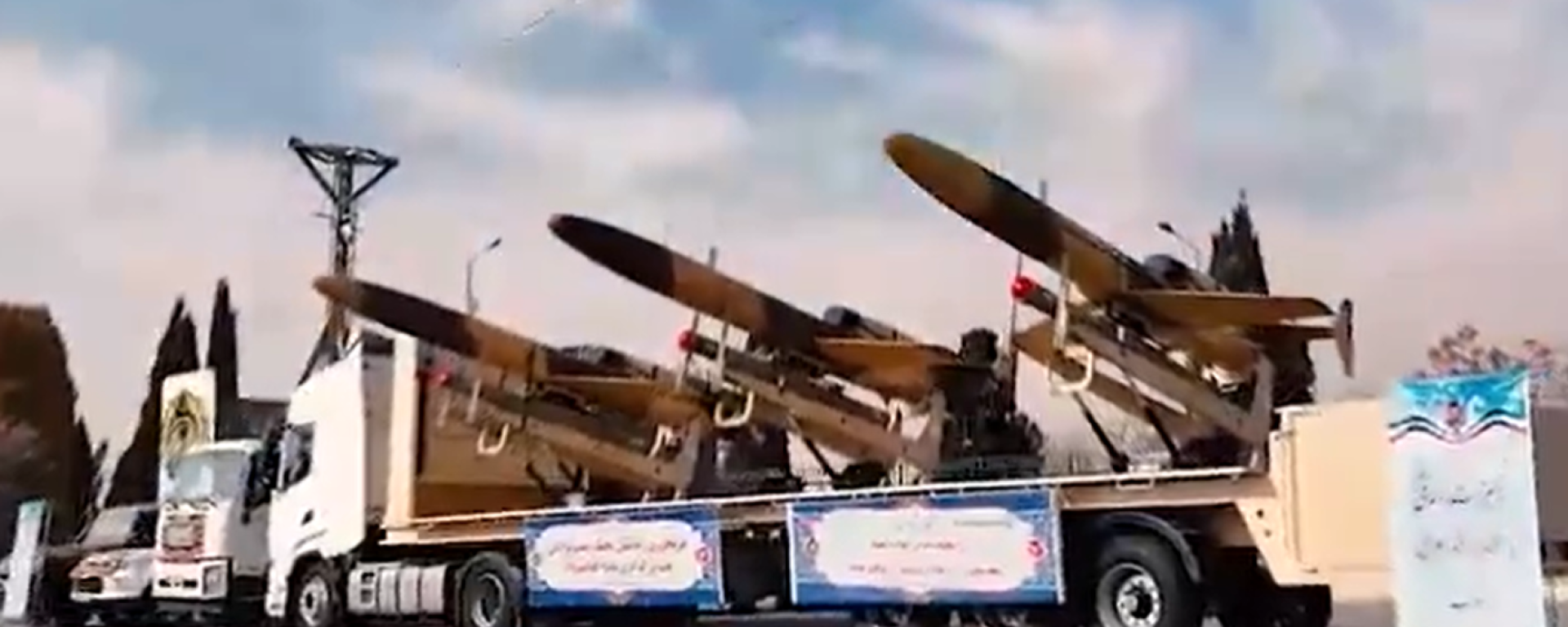
11 December 2023, 21:17 GMT
The Karrar can accelerate to speeds of up to 900 km per hour during flight, and has a reported range of up to 1,000 km on a one-way mission. The drones weigh 700 kg, are 4 meters long, and have a 2.5-meter wingspan. Unlike their MQM-107, which have a bottom-mounted engine, Karrars are equipped with a top-mounted turbojet engine design.
Karrars have reportedly found their way into the hands of Lebanon’s Hezbollah militias, and have been used by allies of the Assad government against terrorists through the course of the CIA-led dirty war against Syria in the 2010s.
Rounding out this list is the Kaman 22 (lit. ‘Bow of Army 22’) – an ultra-long range unmanned combat aerial vehicle developed and manufactured by the Islamic Republic of Iran Air Force. Unveiled in 2021, the drone is remarkable for being Iran’s first wide-body combat drone –with a range up to 3,000 km, a 24-hour endurance time, an 8,000-meter service ceiling and a 300 kg weapons payload.
This large UAV, compared by some defense observers to the MQ-1 Predator (but with an upward, rather than downward mounted V-shaped tail, and
design cues from other indigenous, Iranian-made drones, such as the Shahed 129, the Fotros and Hamaseh), is a whopping 6,5 meters long, 2.5 meters tall and has a wingspan of up to 17 meters.
Along with combat missions, the UAV is designed for reconnaissance and electronic warfare, including the detection and photography of distant targets and the use of smart munitions, or for anti-air and ground attack missions using laser-guided munitions.
